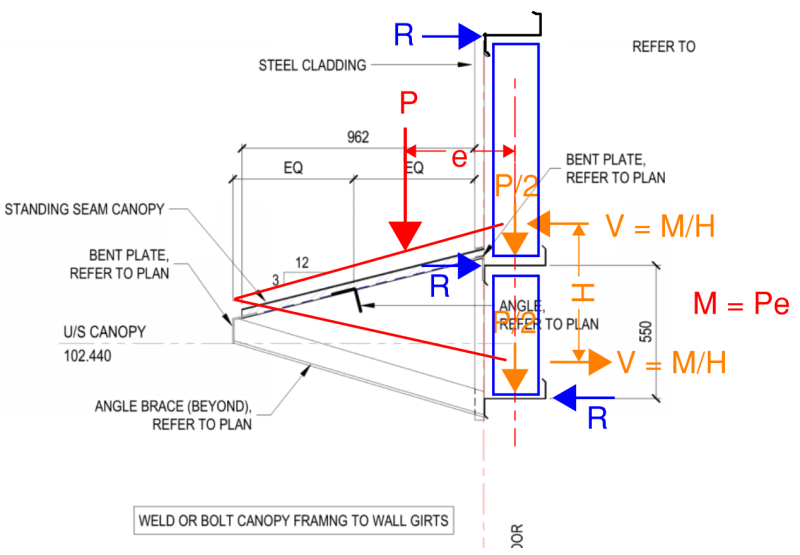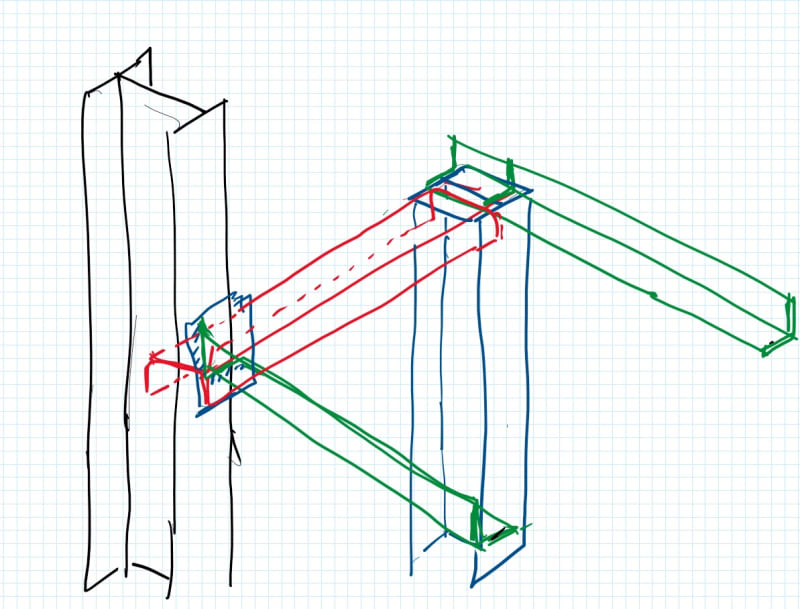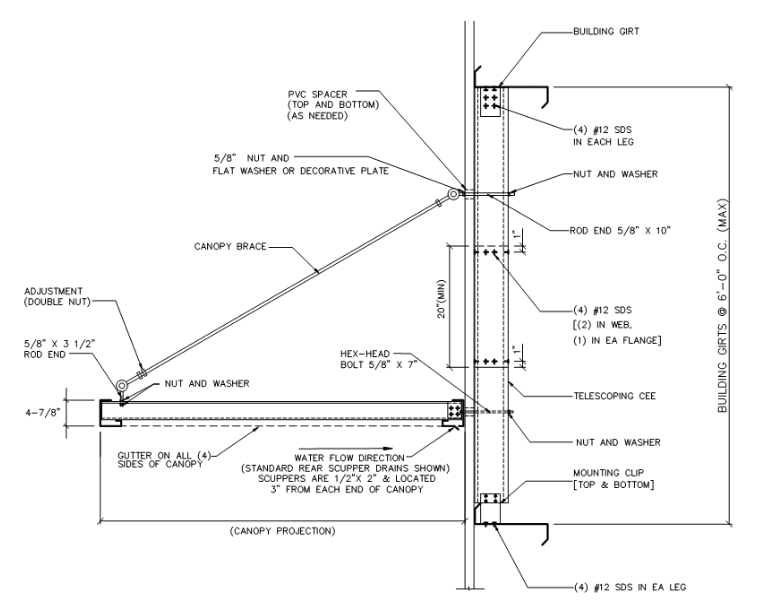onlym112
Structural
- Sep 9, 2019
- 45
Hi everyone,
I have a small canopy frame made with L102x102x6.4 and bent plates above a door frame. The canopy needs to be connected to the Z-girt that has thin 3mm walls. As a connection EIT, I do not feel comfortable connecting a canopy that is to carry snow load to a flimsy Z-girt that is supported by sag rods along its length. I brought this concern to the EOR and asked him to provide me with a detail of how this is going to work and he simply replied to me by telling me to bolt or weld to the girt. I understand he is the one who designed the girts and the canopy but this doesn't sit well with me. Am I missing something here? Below are some pictures to show you my situation.
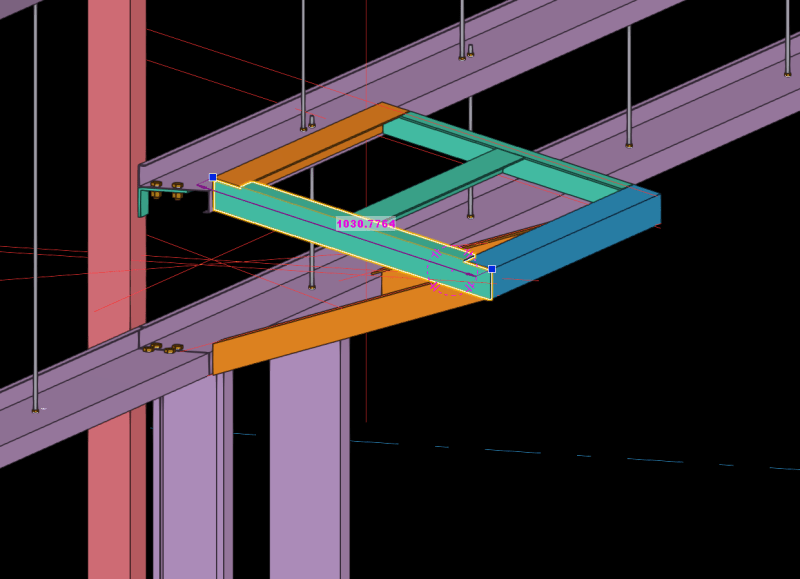
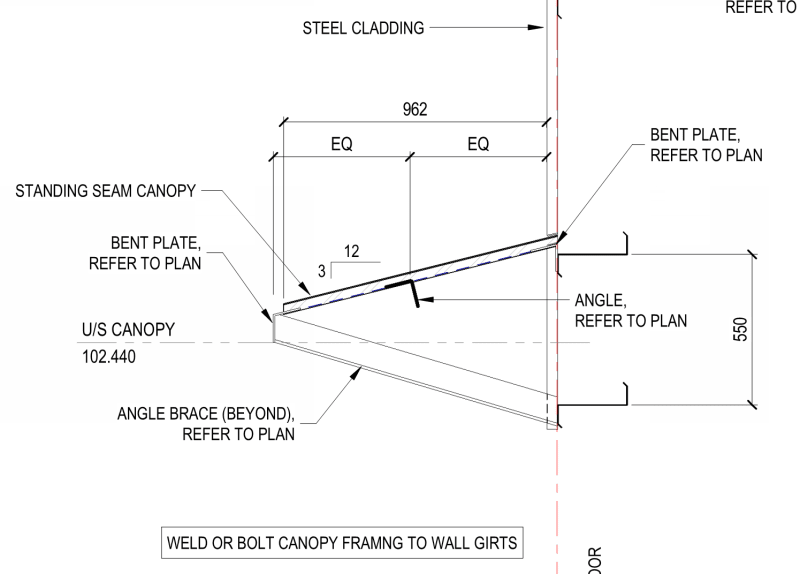
I have a small canopy frame made with L102x102x6.4 and bent plates above a door frame. The canopy needs to be connected to the Z-girt that has thin 3mm walls. As a connection EIT, I do not feel comfortable connecting a canopy that is to carry snow load to a flimsy Z-girt that is supported by sag rods along its length. I brought this concern to the EOR and asked him to provide me with a detail of how this is going to work and he simply replied to me by telling me to bolt or weld to the girt. I understand he is the one who designed the girts and the canopy but this doesn't sit well with me. Am I missing something here? Below are some pictures to show you my situation.



